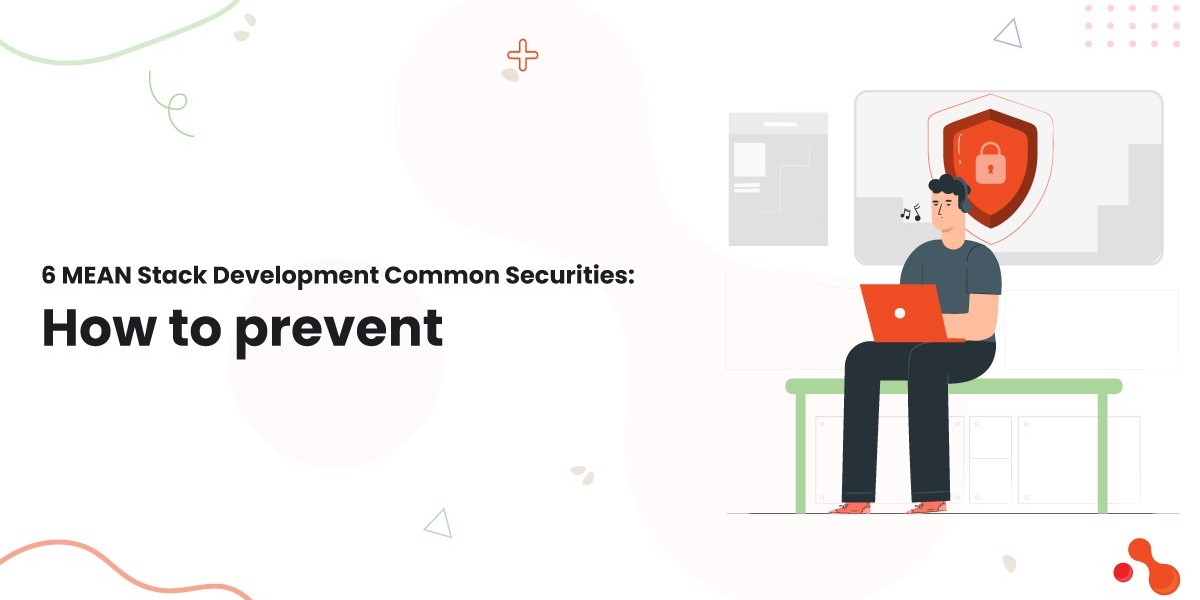Introduction
The MEAN stack—comprising MongoDB, Express.js, Angular, and Node.js—offers a powerful and flexible framework for building web applications. However, like any technology stack, security is a critical concern. Developers and businesses often have questions about how to secure their MEAN stack applications effectively.
Read This article addresses some of the most common questions and provides best practices to ensure robust security in MEAN stack development.
What Are the Common Security Risks in MEAN Stack Development?
We can broadly categorize security risks in MEAN stack development into several areas.
Injection Attacks
Although MongoDB is a NoSQL database, it is still susceptible to injection attacks if users do not properly sanitize their inputs.
Similar to SQL injection, NoSQL injection targets NoSQL databases like MongoDB by manipulating queries to execute unauthorized actions.
Cross-Site Scripting (XSS)
XSS attacks occur when an attacker injects malicious scripts into web pages viewed by other users. These scripts can steal data, manipulate the DOM, or even execute arbitrary code.
Cross-Site Request Forgery (CSRF)
CSRF attacks trick users into performing actions they did not intend, such as changing account details or making unauthorized transactions, by exploiting the user's authenticated session.
Insecure APIs
APIs that do not enforce proper authentication and authorization can expose sensitive data and allow unauthorized actions.
Weak Authentication and Authorization
Poorly implemented authentication and authorization mechanisms can allow attackers to gain unauthorized access to the application.
Data Exposure
Sensitive data stored in the database or transmitted over the network can be exposed if not properly encrypted.
How Can Injection Attacks Be Prevented in MEAN Stack Applications?
Preventing injection attacks involves sanitizing and validating user inputs and using secure coding practices. Here are some strategies:
Input Validation and Sanitization
Always validate and sanitize user inputs to ensure they conform to expected formats. Use libraries like mongoose for MongoDB, which provide built-in validation mechanisms.
Parameterized Queries
Use parameterized queries or prepared statements to prevent attackers from injecting malicious queries. In MongoDB, this can be done using $ operators and parameterized query methods.
Escape Inputs
Escape special characters in user inputs used in database queries to prevent the database from interpreting them as part of the query syntax.
How Can XSS Attacks Be Mitigated in MEAN Stack Applications?
Mitigating XSS attacks involves ensuring that user-generated content is safely rendered and not interpreted as executable code.
Output Encoding
Encode user inputs before rendering them in the browser to prevent them from being executed as scripts. Libraries like helmet can set security-related HTTP headers to protect against XSS.
Content Security Policy (CSP)
Implement a Content Security Policy (CSP) to control which resources the browser loads and executes. This implementation prevents the execution of malicious scripts.
Sanitize User Inputs
Use libraries like DOMPurify to sanitize HTML inputs and remove potentially dangerous code.
Example
javascript
const helmet = require('helmet');
app.use(helmet());
const DOMPurify = require('dompurify');
const cleanHTML = DOMPurify.sanitize(userInput);
How Can CSRF Attacks Be Prevented in MEAN Stack Applications?
Preventing CSRF attacks involves ensuring that every request made by the user is intentional and comes from a trusted source.
CSRF Tokens
Use CSRF tokens to ensure that requests made on behalf of a user are legitimate. This involves generating a token for each session and verifying it on each request.
SameSite Cookies
Set cookies with the SameSite attribute to restrict them from being sent along with cross-site requests.
Double Submit Cookie Pattern
Implement a double submit cookie pattern by sending a unique token both as a cookie and as a request parameter, and ensure the server matches them.
How Can Insecure APIs Be Secured in MEAN Stack Applications?
Ensure that only authorized users can access the API and transmit data securely to secure APIs.
Authentication and Authorization
Implement robust authentication mechanisms (e.g., OAuth, JWT) to verify user identity. Ensure proper authorization checks are in place to restrict access based on user roles.
Rate Limiting
Implement rate limiting to prevent abuse and limit the number of requests a user can make to the API.
Secure Data Transmission
Use HTTPS to encrypt data transmitted between the client and server, protecting it from interception.
Example
javascript
const jwt = require('jsonwebtoken');
const expressJwt = require('express-jwt');
app.use(expressJwt({ secret: 'your-SECRET-key', algorithms: ['HS256'] }).unless({ path: ['/login'] }));
app.post('/api', (req, res) => {
const token = req.headers.authorization.split(' ')[1];
jwt.verify(token, 'your-SECRET-key', (err, decoded) => {
if (err) {
return res.status(401).send('Unauthorized');
}
res.send('Welcome to the API');
});
});
How Can Weak Authentication and Authorization Be Addressed in MEAN Stack Applications?
Strengthening authentication and authorization involves using secure practices to verify user identities and control access.
Strong Password Policies
Enforce strong password policies requiring a mix of letters, numbers, and special characters. Implement account lockout mechanisms to prevent brute-force attacks.
Multi-Factor Authentication (MFA)
Implement MFA to add an additional layer of security by requiring users to provide two or more verification factors.
Role-Based Access Control (RBAC)
Implement RBAC to ensure that users can only access resources and perform actions that their role permits.
How Can Data Exposure Be Prevented in MEAN Stack Applications?
To prevent data exposure, ensure encryption of sensitive data and restrict access to it.
Encryption
Encrypt sensitive data both at rest and in transit. Use encryption libraries like crypto in Node.js to encrypt data before storing it in the database.
Access Controls
Implement strict access controls to ensure that only authorized users can access sensitive data. Use environment variables to store sensitive information like API keys and database credentials.
Regular Audits
Conduct regular security audits and vulnerability assessments to identify and address potential risks.
Now, moving further let us learn about How Acquaint Softtech can help you in building effective MEAN Stack developments by solving the common security issues.
How Acquaint Softtech can help
Based in India, Acquaint Softtech is a leader in IT staff augmentation and software development. Our specialty is customizing applications and websites to exact client specifications utilizing the Laravel framework. Our fast onboarding procedure guarantees that you can hire remote developers for your team in as little as 48 hours for remote working organizations.
Furthermore, we charge a very affordable $15 per hour for these remote developer services. We are also adding MEAN Stack Development to our list of capabilities. You may add more creativity and efficiency to your projects by working with our MEAN stack engineers. Get in touch with us to increase your growth capabilities effectively and economically and hire MEAN developer now!
Let's now conclude the conversation.
Conclusion
Security in MEAN stack development is paramount to protect applications from a wide range of threats. Understanding common security risks and implementing best practices enable developers to build secure and robust MEAN stack applications. These best practices include input validation, output encoding, CSRF tokens, strong authentication mechanisms, and data encryption.
Regular security audits, staying updated with security patches, and integrating security into the development lifecycle are essential steps to ensure ongoing protection against emerging threats. Addressing these common questions and concerns will help developers and businesses secure their MEAN stack applications effectively.









